Table of Contents
Introduction
The Evolution of Web-development
The evolution of web-development is a fascinating journey that mirrors the rapid advancements in technology and our ever-growing dependence on the digital world. In the early days, web-development was a straightforward affair—plain HTML pages with static text and rudimentary visuals. These web pages served their purpose but were not interactive or particularly engaging. They were merely digital brochures, a one-way street where businesses or individuals could share information, and users could read it, with no room for real-time interaction or customization.
As technology progressed, we saw the emergence of more dynamic and complex capabilities. Cascading Style Sheets (CSS) and JavaScript entered the scene, allowing for stylistic improvements and interactive features. Websites could now have dropdown menus, forms, and animations. This marked a significant shift, turning the web into a two-way street where users could interact with the content and even influence it. The concept of a “web application” was born, and suddenly the Internet was not just a library but a playground and a marketplace.

Then came the era of mobile responsiveness, APIs, and real-time data. Websites became more like applications, capable of doing almost anything you could do with standalone software. This was bolstered by the rise of cloud computing and advancements in server technology, which enabled websites to become more robust, secure, and fast. Features like live chat, streaming, and e-commerce capabilities became the norm rather than the exception.
Now, as we stand on the threshold of integrating artificial intelligence and machine learning into web-development, we can only imagine how much more personalized and intelligent our web experiences will become. With each leap in technology, the web has not just evolved; it has transformed, becoming an integral part of our personal and professional lives. It’s not just about information anymore; it’s about interaction, transaction, and even anticipation of user needs. The web has truly come a long way, and its evolution shows no signs of slowing down.
The Entry of AI in the Landscape
The introduction of Artificial Intelligence (AI) into the realm of web-development marks more than just a technological progression; it signifies a monumental shift in how we conceptualize and create digital experiences. This isn’t simply adding a new layer of paint or introducing a sleeker user interface. No, we’re diving headfirst into a transformative era where our web interactions won’t just be facilitated by technology; they’ll be shaped, personalized, and even anticipated by it. We are transitioning from static, one-size-fits-all platforms to dynamic, intelligent environments that adapt in real-time to user behavior.
AI’s role in this landscape extends far beyond mere bells and whistles like chatbots and recommendation algorithms. Think about it: traditionally, web developers have had to pre-program every pathway a user might take, trying to anticipate needs and streamline the user experience based on educated guesses. With AI, the system itself can learn from each user interaction, continually improving and adapting without human intervention. This isn’t just convenient; it’s revolutionary. We’re talking about websites that can understand user behavior, preferences, and even emotions to some extent, providing hyper-personalized experiences that were previously unthinkable.

AI’s application also promises leaps in operational efficiency and security. Tasks that required significant man-hours, like data analysis and vulnerability assessment, can now be automated with greater accuracy. Security measures can adapt in real-time to new kinds of threats, making the digital landscape safer for businesses and users alike.
So, when we talk about the entry of AI in the web-development landscape, we’re discussing a paradigm shift of epic proportions. It’s a game-changer that promises to reshape not only how we interact with the digital world but also how we benefit from it in our daily lives.
Why AI in Web-development?
A Brief on AI
Artificial Intelligence (AI) isn’t merely a trendy buzzword that’s circulating in tech circles; it’s a groundbreaking field with the lofty goal of replicating human intelligence in machines. To put it simply, AI is designed to think, learn, and even potentially feel the way humans do. But don’t let the simplicity of that definition fool you. The field is incredibly vast and complex, spanning a range of specialized domains from machine learning to natural language processing, computer vision, and beyond.
Machine learning, a subset of AI, focuses on developing algorithms that enable computers to learn from and make decisions based on data. Instead of being explicitly programmed for every function, these machines ‘learn’ from patterns and improve over time. Meanwhile, natural language processing empowers computers to understand, interpret, and even generate human language in a way that’s valuable. This could mean anything from translating languages in real-time to offering emotionally sensitive responses in a customer service chatbot.
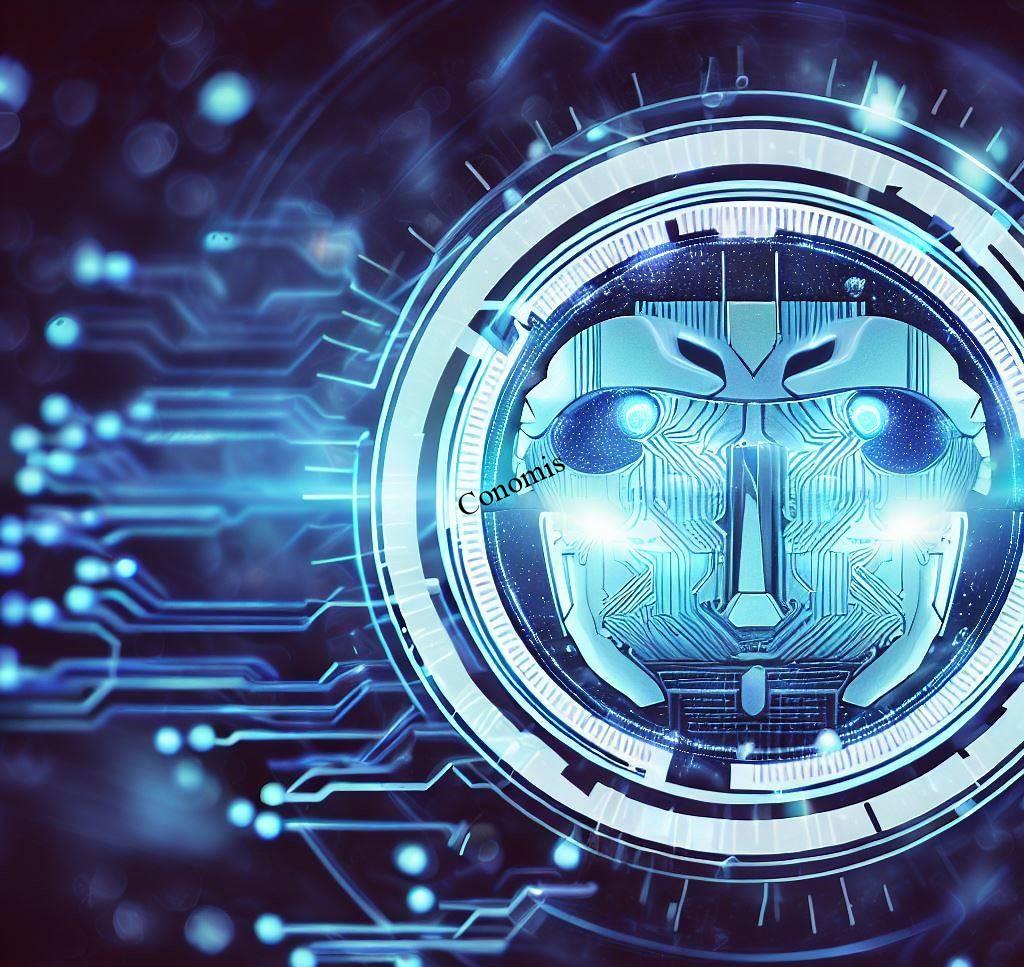
So, AI is far more than just a high-tech fad; it’s an interdisciplinary field that promises to revolutionize how we interact with technology, transforming it from a mere tool to an adaptive, intelligent companion.
The Need for AI in Web-development
Why integrate AI into web-development? The answer lies in the transformative potential that AI holds. Traditional websites, however interactive or beautifully designed, are essentially static in nature. They act like digital brochures—offering information, hosting content, and maybe providing a platform for basic transactions. But what if your website could do more than just display information? What if it could actually think, adapt, learn from user behavior, and make real-time decisions? That’s the extraordinary capability that AI brings to the table.
Imagine a website that not only knows what you’re looking for but also suggests actions based on your past behavior and current needs. A retail website, for instance, could predict the items you’re most likely to purchase and offer personalized discounts to seal the deal. Or consider a healthcare platform that adapts to user inputs, providing personalized fitness plans or medical advice based on individual health metrics and activity patterns.

With AI, a website transforms from a static interface to a dynamic entity, capable of offering a truly personalized and adaptive experience. It goes beyond serving as a digital pamphlet to becoming an intelligent service provider, anticipating needs, offering solutions, and continuously evolving. That’s the kind of revolutionary change that makes the marriage of AI and web-development not just desirable, but almost inevitable.
Chatbots and Virtual Assistants
What They Are
When we talk about AI in our daily lives, we often think of chatbots and virtual assistants like Siri, Alexa, or Google Assistant. These aren’t just fancy additions to our gadgets; they are real-world applications of Artificial Intelligence designed to make our lives easier and more efficient. While they may seem simple on the surface, delivering quips or weather updates, the technology behind them is far from trivial.
Chatbots, for example, often use Natural Language Processing (NLP) to understand and respond to user queries. They can handle everything from booking appointments and setting reminders to answering frequently asked questions, thereby automating tasks that would otherwise require human intervention. The aim is not just to provide information but to create a seamless, interactive user experience.
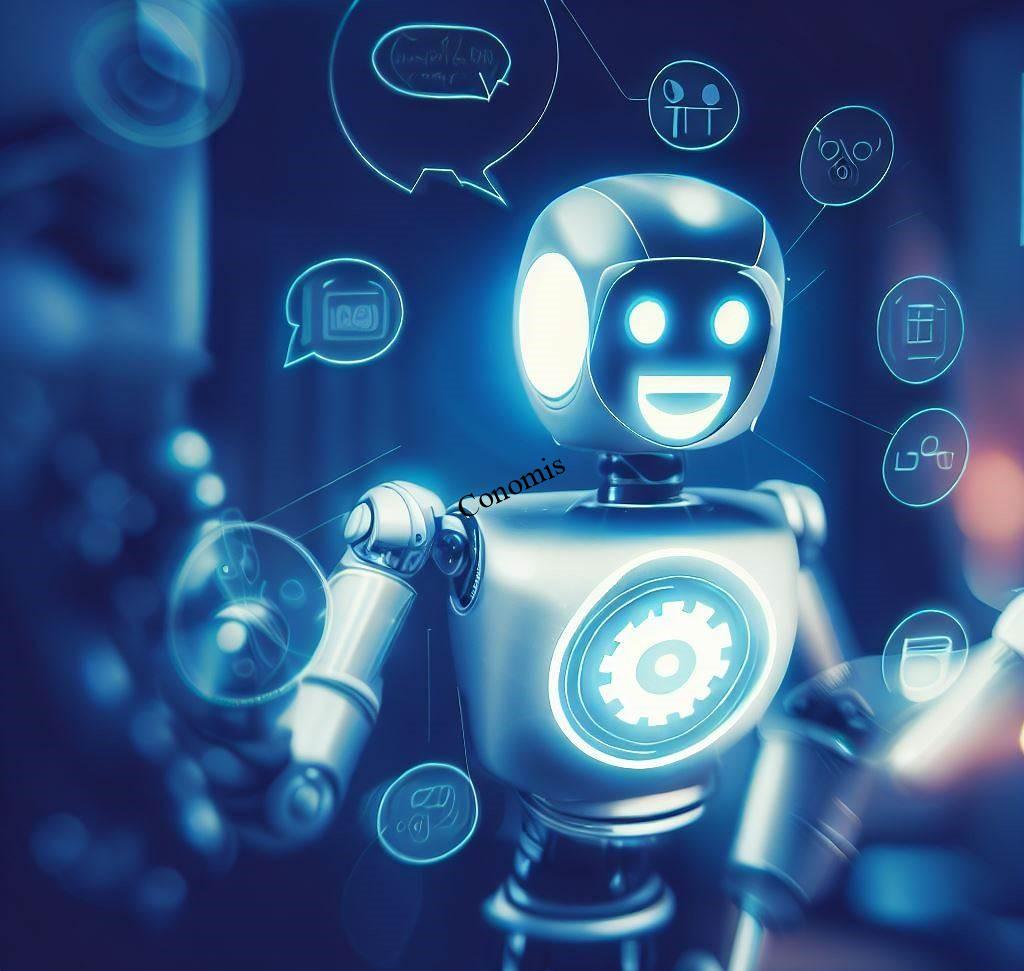
Virtual assistants like Siri and Alexa take it a step further. They integrate with various other smart devices and systems, allowing you to control your home’s lighting, play your favorite songs, or even shop online using voice commands. These applications of AI contribute to a more streamlined and interactive user experience, illustrating the transformative power of AI in making our digital interactions more engaging and efficient.
Benefits for Businesses and Users
Is the buzz surrounding AI’s role in enhancing user experience and streamlining business operations justified? The answer is a resounding yes! Let’s start with the benefits for businesses. Implementing AI-driven chatbots for customer service is not just a trendy move; it’s a strategic decision that can yield substantial returns. Traditional customer service operations require human agents who work specific hours, and each agent can handle only one customer at a time. With AI-powered chatbots, businesses can provide 24/7 customer support without human intervention, thereby saving on labor costs and enhancing operational efficiency.
But the advantages don’t stop at the corporate level; they extend to the user experience as well. Imagine needing support in the middle of the night or during a holiday when human agents are unavailable. With an AI chatbot, you can get instant assistance without the frustration of waiting in a queue or dealing with limited business hours. This immediate, round-the-clock support dramatically improves user satisfaction and loyalty.

In short, the integration of AI into customer service operations is a win-win situation for both businesses and users. Companies get to save on resources and improve efficiency, while users enjoy quicker, more convenient support. The hype is not only worth it; it’s a preview of the new norm in customer engagement and service.
Personalized User Experiences
Analyzing User Behavior
Have you ever found yourself marveling at how Netflix seems to predict exactly what you want to watch next? It’s almost as if the platform knows your taste better than you do. Well, that’s AI at work, quietly operating in the background to analyze your behavior and preferences. This goes beyond merely tracking which shows or movies you’ve watched; it dives into the nuances of your viewing habits, such as how long you watch a particular genre or even what time of day you’re most active on the platform.
This data is then crunched in real-time using complex algorithms that not only analyze your behavior but also compare it with patterns from other users who have similar tastes. The result? A personalized list of recommendations that seem almost eerily accurate. AI’s ability to analyze vast amounts of data and discern patterns allows platforms like Netflix to offer an extraordinarily customized experience, thereby increasing user engagement and satisfaction.

But it’s not just about entertainment; this kind of behavioral analysis has broad applications across various industries. From e-commerce platforms suggesting products you’re likely to buy, to news websites highlighting articles based on your reading history, AI’s capacity to analyze user behavior is reshaping our digital experiences in profoundly personalized ways.
Improving User Retention and Satisfaction
One of the most compelling advantages of integrating AI into web platforms is its impact on user satisfaction and retention. In today’s digital age, users are bombarded with an overwhelming amount of information and choices. It’s easy to get lost in the clutter, leading to frustration and, ultimately, disengagement. This is where AI comes in, offering a tailored experience that makes navigation effortless and intuitive.
By analyzing user behavior and preferences, AI can personalize not just the content but also the user interface itself. For instance, if a user frequently visits the sports section of a news website, AI algorithms can prioritize that content on their homepage. Or in an e-commerce setting, the platform could highlight products related to the user’s recent searches or purchases, making it easier for them to find what they’re looking for.

This level of personalization serves two essential purposes. First, it increases user satisfaction by making interactions more relevant and less time-consuming. Second, satisfied users are more likely to return, thereby improving retention rates. Both of these factors are crucial for the long-term success of any platform, making AI not just a nice-to-have feature but a critical tool in enhancing user engagement and loyalty.
Enhanced Functionality
Streamlining Processes
The impact of AI in web-development isn’t just felt on the user-facing end; it significantly streamlines processes for developers as well. One of the key areas where AI shines is in automating tasks that are otherwise mundane and repetitive. For instance, AI-powered tools can help with code optimization, debugging, and even generating code from design mock-ups, freeing developers to focus on more complex and creative aspects of web-development.
But automation is just the tip of the iceberg. AI also provides intelligent analytics that can offer actionable insights into user behavior, performance metrics, and potential bottlenecks. Instead of sifting through piles of raw data, developers get a refined, focused view that helps them make informed decisions more rapidly. It’s like having an extra team member that works tirelessly, crunching numbers and identifying trends, but without the associated human resource costs.

In essence, AI acts as a force multiplier in web-development. It takes on the grunt work and provides high-level analysis, allowing developers to work more efficiently and effectively. By streamlining these backend processes, AI doesn’t just make life easier for developers; it fundamentally elevates the quality and capabilities of the web platforms they create.
Speeding up Task Execution
In any industry, time is indeed money, but this adage holds particular weight in the rapidly evolving field of web-development. Here, falling behind on the technology curve can be costly, both in terms of missed opportunities and financial investment. This is where AI comes into play as a significant time-saver, automating routine tasks that would otherwise consume valuable hours of a developer’s day.
Think about the fundamentals like debugging or code optimization. These are necessary steps in the development process, but they’re often time-consuming and can be monotonous. AI-powered tools can handle these tasks with remarkable speed and accuracy, freeing developers to channel their skills and creativity into more meaningful aspects of a project, such as innovation and quality assurance.
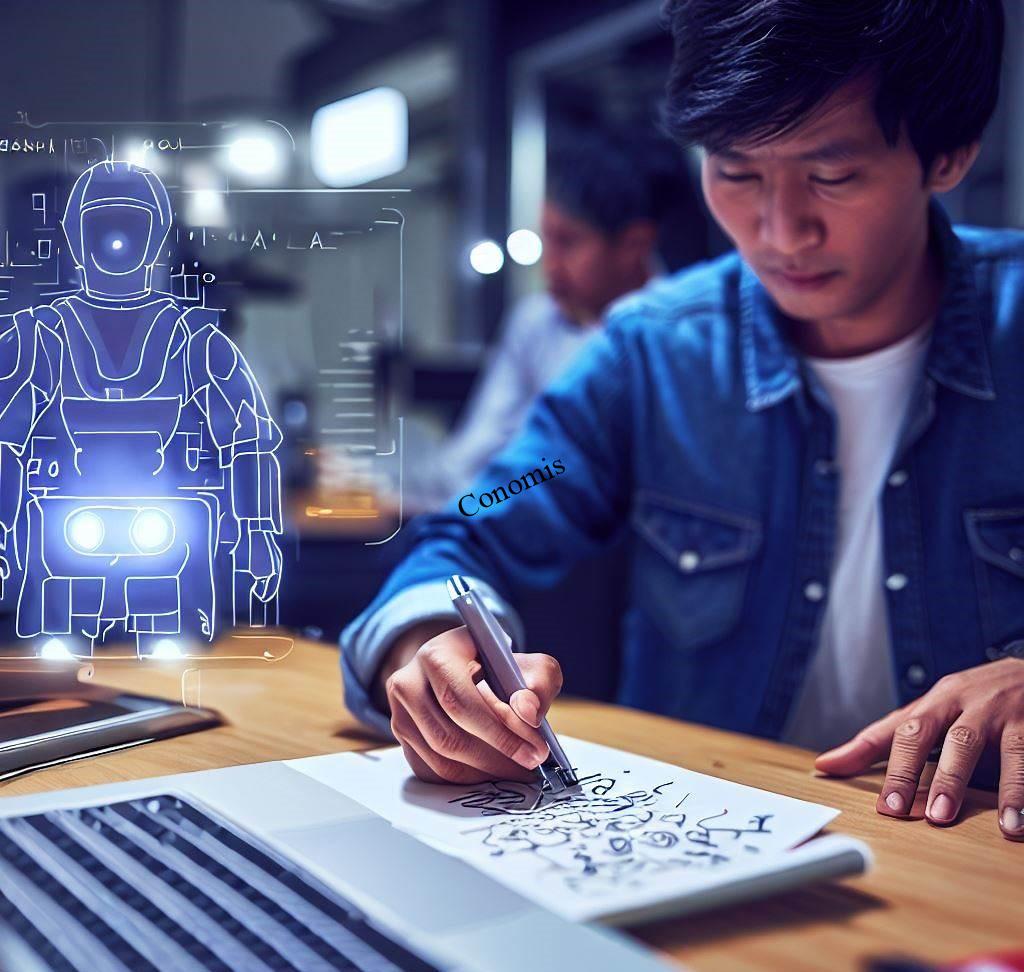
Furthermore, by automating these standard procedures, AI not only saves time but also increases the overall quality of the work. There’s less room for human error, and developers can focus on fine-tuning the more nuanced elements of a site or application. By helping to speed up task execution, AI becomes an invaluable tool for developers, enhancing both their productivity and the quality of their work.
Code Optimization and Debugging
How AI Helps
If you’ve ever delved into the world of coding, you’ll know that debugging can be a painstaking and time-consuming process. It’s often compared to looking for a needle in a haystack, as you sift through lines and lines of code to identify the root cause of a particular issue. Now, imagine a tool that not only finds the needle for you but also suggests ways to avoid similar issues in the future. That’s what AI brings to the table in web-development.
AI algorithms have the capability to read and optimize code, pinpointing errors or inefficiencies that might otherwise go unnoticed. What’s more, these algorithms can also suggest potential fixes, turning what could be hours of manual debugging into a task that takes just minutes. This doesn’t just save time; it also improves the quality of the end product. Efficient, error-free code results in faster, more reliable websites and applications, which in turn lead to better user experiences.

So, when we talk about how AI helps in web-development, it’s not just about automating repetitive tasks. It’s about enhancing the entire development process, making it more efficient, accurate, and ultimately, more effective.
Impact on Developers
The advent of AI in web-development might initially spark fears of obsolescence among developers, but the reality is far from that. Rather than replacing human skills, AI serves as a complement, taking on tasks that are often time-consuming but not particularly intellectually demanding. It’s akin to having an assistant who diligently manages your paperwork, scheduling, and routine tasks, freeing you up to focus on high-level strategic meetings and decisions.
This paradigm shift in task delegation allows developers to become indispensable for the more complex and creative aspects of web-development. Instead of spending hours debugging or optimizing code, they can direct their energies toward innovation, problem-solving, and enhancing user experience. These are areas where human creativity and understanding still far outstrip AI capabilities.
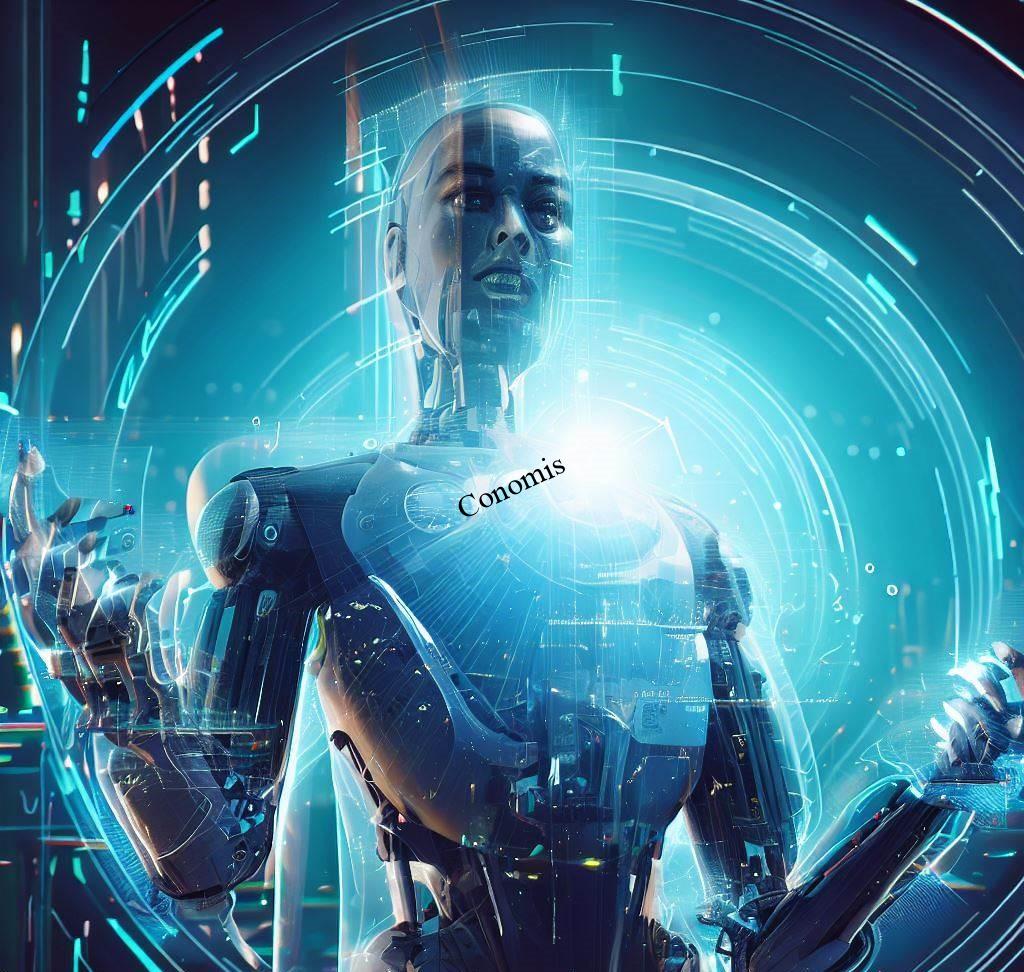
Therefore, far from making developers redundant, the integration of AI into web-development amplifies their value. They can now specialize in areas that require a high level of expertise and ingenuity, which are critical for the evolution of web technologies. In this sense, AI acts as a tool that elevates the role of developers, making them even more crucial than before in shaping the future of the web.
Security Measures
Identifying Vulnerabilities
In the era of data breaches and cyber-attacks, security has never been more critical in the digital landscape. It’s a constant game of cat and mouse between administrators and malicious actors, where the stakes are incredibly high. With the mass of data and the complexity of systems in play, spotting vulnerabilities can be like trying to find a chink in a constantly moving armor. This is where AI serves as a game-changer in the field of cybersecurity.
AI algorithms can scan through code, analyze user behavior, and monitor network activity in real-time to identify potential vulnerabilities or suspicious activities. Unlike traditional security measures, which often rely on historical data and predefined rules, AI systems learn and adapt, getting better at identifying new types of threats as they evolve. When a potential issue is detected, these systems can alert administrators instantaneously, enabling quick action to mitigate risks.
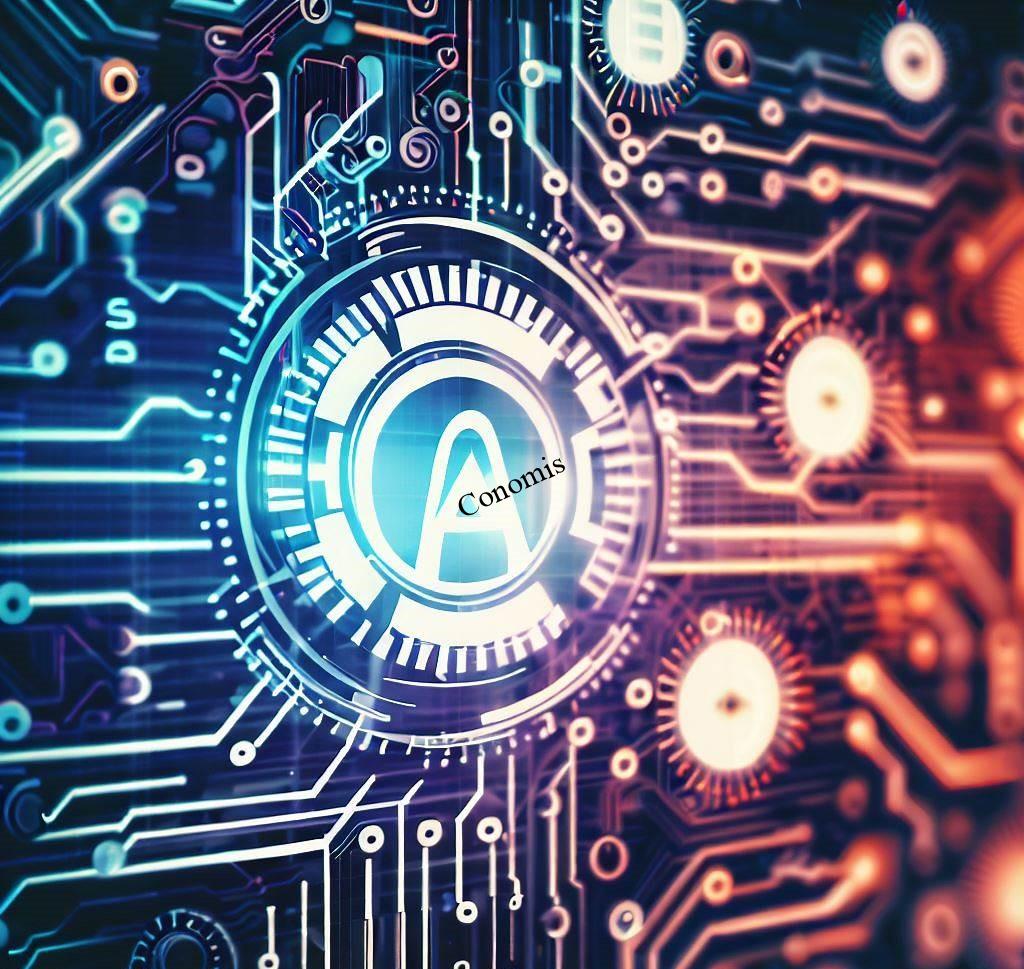
This proactive approach to security provides an extra layer of defense, making it much harder for unauthorized users to exploit system vulnerabilities. In this way, AI doesn’t just contribute to the efficiency and functionality of web-development; it also plays a crucial role in safeguarding the integrity of digital platforms.
Preventing Cyber Attacks
One of the most promising capabilities of AI in web security is its ability to take proactive measures to deter cyber threats. While traditional security systems are often reactive—flagging suspicious activities only after they have happened—AI can spot unusual patterns as they are unfolding and take immediate steps to prevent a cyber attack. This real-time intervention is equivalent to having a security guard who not only alerts you when an intruder is attempting to break in but also actively works to keep them out.
AI can automatically block IP addresses, quarantine affected systems, or even introduce deceptive elements into the environment to divert or confuse attackers. This isn’t just about sounding an alarm; it’s about locking the doors and windows the moment someone suspicious comes onto the property. In doing so, AI serves as an active participant in web security, working alongside human administrators to build a safer, more secure digital space for users.

This multi-layered, proactive approach to security marks a significant step forward in making the web a safer place. By using AI to both identify and counteract threats in real-time, we are adding a robust layer of protection that has the potential to significantly reduce the risk and impact of cyber attacks.
Predictive Analytics
What It Means
In the world of web-development and beyond, predictive analytics has always been a valuable tool for forecasting future trends based on historical data. However, traditional predictive analytics methods can be time-consuming and often require significant human oversight. Enter AI, and the game changes entirely. AI can churn through vast sets of data at an unprecedented speed, making predictive analytics not just more accurate but also incredibly efficient.
Imagine being able to predict user behavior, market trends, or even potential security threats with a degree of accuracy that was previously unimaginable. This is not just about drawing on past data but also about recognizing complex patterns and relationships among different variables, something that AI algorithms excel at. When predictive analytics is powered by AI, it turns into a robust tool that can guide decision-making in real-time.

The implications are enormous, from personalized user experiences to more effective resource allocation for businesses. In a sense, it’s like having a crystal ball that not only gives you a glimpse into the future but also provides actionable insights on how to prepare for it. With this advanced level of foresight, both developers and businesses can make more informed decisions, ensuring a smarter, more efficient digital landscape.
Use Cases in Web-development
The application of predictive analytics in web-development has evolved to become an indispensable tool for businesses aiming for long-term success. While web analytics can provide you with a snapshot of the past or current performance metrics, predictive analytics goes a step further. By leveraging AI algorithms, predictive analytics can churn through historical data to provide actionable insights about future trends, allowing businesses to optimize their strategies proactively.
Imagine you’re running an e-commerce site. Using predictive analytics, you can foresee trends in consumer behavior, predict which products are likely to be hits in the upcoming season, and even identify potential bottlenecks in your supply chain before they become a problem. This kind of foresight isn’t just advantageous; it’s revolutionary for business planning.
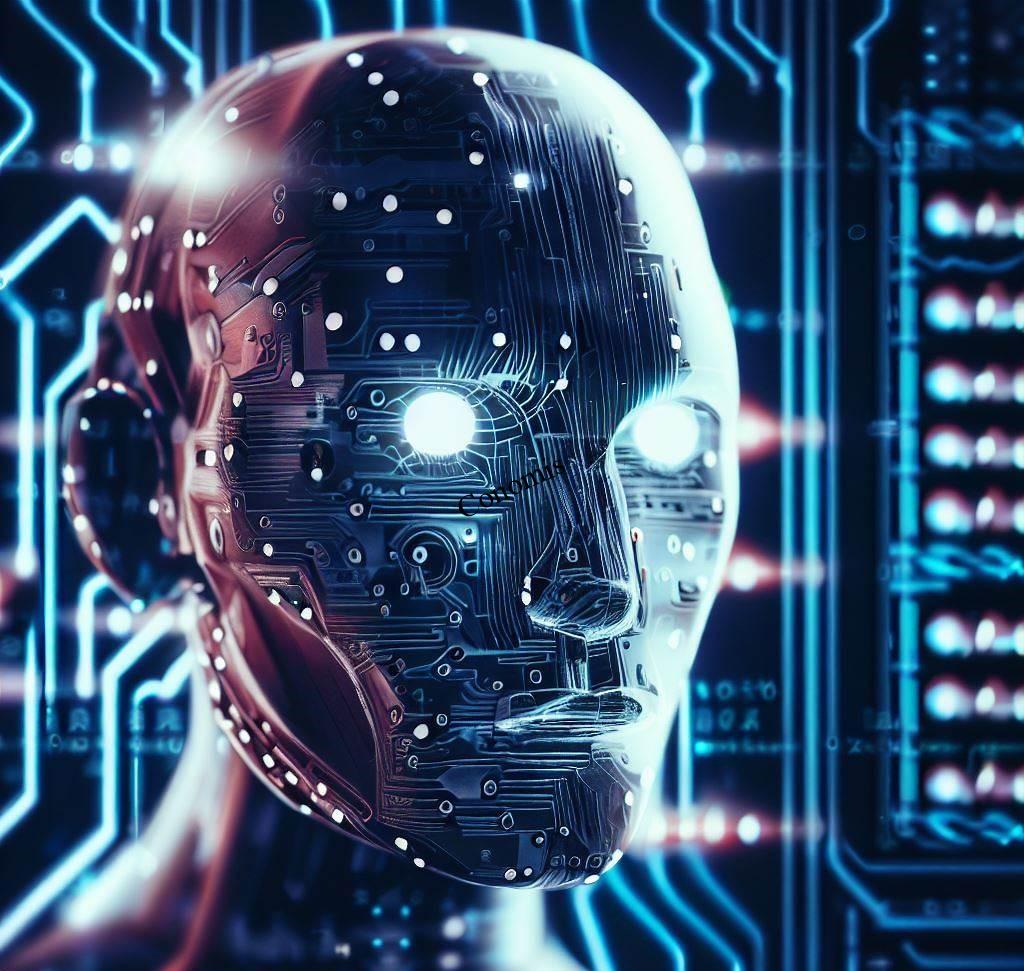
In essence, the integration of predictive analytics and AI into web-development provides businesses with a strategic advantage, helping them stay one step ahead in the game. By understanding and predicting user behavior, as well as various performance metrics, businesses can fine-tune their strategies, allocate resources more effectively, and pave the way for future growth and success.
Future Implications
AI Trends to Watch
The landscape of AI is as dynamic as it is promising, and the future appears to be teeming with innovations that could revolutionize not just web-development but our interaction with technology as a whole. One such emerging trend is emotional AI, which has the potential to understand human emotions through text, speech, and even facial expressions. Imagine a customer support chatbot that doesn’t just resolve your queries but also empathizes with your frustration. The possibilities for creating deeply personalized and emotionally intelligent platforms are immense.
Quantum computing is another trend that promises to take AI to new heights. With computing powers exponentially greater than today’s traditional systems, quantum computers could accelerate machine learning algorithms to speeds we can’t even fathom right now, opening doors to solutions for complex problems that are currently unsolvable.

It’s clear that we’re on the brink of some groundbreaking advancements in AI technology. From creating emotionally intelligent interactions to harnessing the untapped potentials of quantum computing, the AI trends on the horizon promise a future filled with incredible possibilities. These advancements will not only push the boundaries of what AI can do but also redefine the way we interact with technology and the web.
Preparing for the Future
In a rapidly evolving technological landscape, staying abreast of the latest trends in AI is not just a matter of staying competitive; it’s a necessity for survival. Think of it as staying fit in a world that’s constantly upping the game. If you’re not prepared to adapt and evolve, you risk becoming irrelevant.

Being up-to-date with the latest advancements in AI—be it emotional intelligence algorithms, quantum computing, or predictive analytics—can give you the competitive edge you need. It equips you with the tools and knowledge to make informed decisions, optimize your strategies, and ultimately, pave the way for future growth and success. In this fast-paced digital age, falling behind is not an option.
Challenges and Considerations
Ethical Concerns
As transformative as AI is, it’s not without its ethical complications. One significant area of concern is data privacy. With AI algorithms sifting through massive amounts of personal data to offer personalized experiences, there’s always a risk of misuse or unauthorized access to sensitive information. It’s crucial to strike a balance between leveraging data for AI and maintaining strict privacy protocols.

Another pressing issue is algorithmic bias. If the data fed into AI systems contains inherent biases, the algorithms will only perpetuate those biases, leading to skewed or unfair outcomes. Thus, it’s vital for developers and businesses alike to be cognizant of these ethical considerations as they integrate AI into web-development. Responsible AI is not just smart—it’s essential.
Technological Constraints
While the potential benefits of AI in web-development are undeniably vast, it’s essential to consider the technological constraints that come with it. AI algorithms, particularly those involving deep learning or complex computations, can be resource-intensive. This means that businesses may need to invest in high-end hardware and potentially costly software solutions to fully leverage AI capabilities.

Therefore, the decision to integrate AI into web-development should be a calculated one, involving a thorough cost-benefit analysis. Will the investment yield a significant enough return in terms of enhanced user experience, streamlined operations, or improved security? Businesses must evaluate these questions critically before diving into the world of AI-enhanced web-development.
Conclusion
The integration of AI in web-development isn’t just another passing trend; it’s fundamentally shaping the future of how we interact with the digital world. It’s revolutionizing multiple facets of the field, from customer service to cybersecurity, and it’s doing so in ways that were previously thought to be the stuff of science fiction. AI allows for a level of personalization and efficiency that can make websites not just more user-friendly but also more secure and robust.

What’s truly exciting is that we’re just scratching the surface of what’s possible. As AI technology continues to evolve, so too will its applications in web-development, opening up new horizons for innovation and improvement. It’s a fusion of technological capability and human creativity, each amplifying the other. In this rapidly evolving landscape, AI serves as both a tool and a guide, helping us navigate the complexities of modern web-development while pointing the way toward uncharted territories yet to be explored.
FAQs
What is AI in web-development?
It’s the use of Artificial Intelligence to improve various aspects of web-development like user experience, security, and functionality.
How has web-development evolved over the years?
Web-development has progressed from basic HTML pages to dynamic, interactive websites. The introduction of CSS, JavaScript, and various back-end languages has allowed for more responsive and user-friendly web designs. Recently, the integration of AI in web development has further revolutionized the field.
Is it essential to integrate AI into my web-development strategy?
While not compulsory, integrating AI can greatly enhance the user experience, automate mundane tasks, and improve website security. AI tools can streamline many aspects of web development, making sites more efficient and user-centric.
How can I ensure my web-development approach remains up-to-date with technological advancements?
Continual learning and staying updated with industry trends are key. Attending web-development seminars, taking online courses, and being part of web developer communities can help you stay abreast of the latest technologies and methodologies.
Are there any security concerns to consider in modern web-development?
Security is paramount in today’s digital age. With rising cyber threats, it’s essential to focus on secure coding practices, regular updates, and potentially integrating AI, which can identify vulnerabilities and prevent cyber-attacks proactively.
You Can Also Read
https://unstoppabledomains.com/
https://www.investopedia.com/terms/d/dotcom.asp
https://www.lexology.com/library/detail.aspx?g=533fb2c9-725c-41d3-b2fd-64455f21ecbd
Conomis Thoughts
![]() Copyright 2023 CONOMIS
Copyright 2023 CONOMIS

